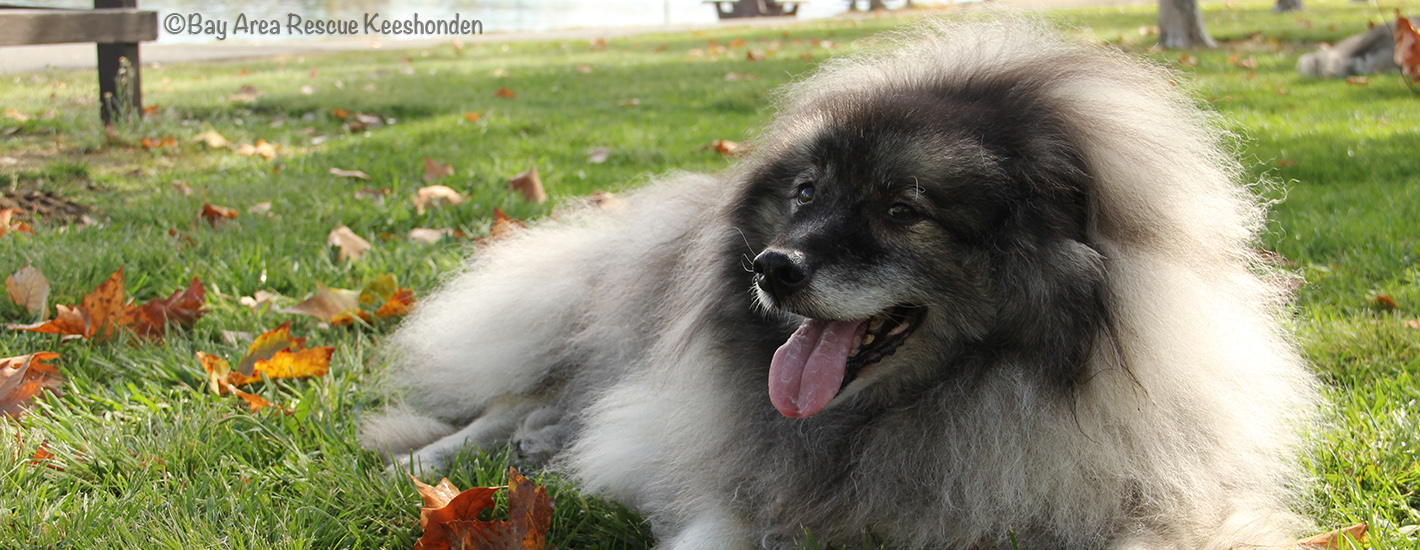
We find it’s worth investing in quality tools. Well-made tools will last for years, be easier for you to use, are more comfortable for the dog, and grooming will be faster and more enjoyable for both of you.
A good place to shop is at the vendors who come to dog shows, or you can shop online.
Here’s what you’ll need:
- Pin brush
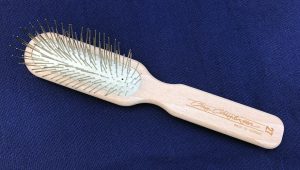
The pin brush is used for line brushing where the coat is long. You’ll be using your pin brush more than any of your other tools.
We prefer Chris Christensen pin brushes. These high-quality brushes have polished pins with soft smooth tips that glide through the coat. They don’t tear the dog’s coat or scratch the skin, which makes grooming easier and more comfortable for you and the dog!
The Chris Christensen “original series” is an excellent brush. The 27 mm size (oval or oblong) works well for most Kees.
Most of the pin brushes you’ll find at pet supply stores have little balls on the tips. Avoid them! They snag and tear the coat. Ouch!
- Slicker brush
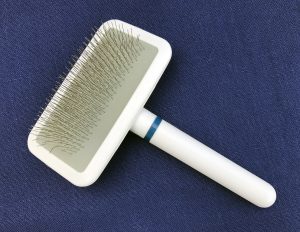
The slicker brush is used where the coat is short, such as on the legs. It can also be used to finish fluffing the coat after it’s been line brushed, and to help remove small tangles. The slicker brush is your second most used tool.
Our favorite all-around slicker brush is the DoggyMan slicker. This soft slicker has smooth stainless steel bristles set in a flexible cushion. It’s gentle on the dog’s coat and skin, and comfortable to use. The large size (4-1/2” x 2-1/2”) is best for most purposes.
- Large metal comb
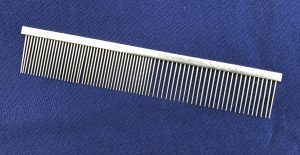
Combs are used for breaking up mats, combing the tail and legs, and for finishing touches. Most of us use the comb lightly – we don’t comb the entire dog.
Several companies make good combs. They’re often called greyhound combs or poodle combs.
Some combs are widely spaced on one half, and narrow on the other. We’ve found we don’t use the narrow end – the tines are too close for the Keeshond coat. A comb that’s evenly spaced (about 6-8 tines per inch), with tines about 1” to 1-1/4” long, is a good choice.
- Small scissors with blunt ends
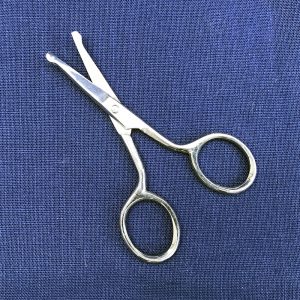
These are used for trimming the hair on the bottoms of the feet. Many dogs are ticklish – the blunt ends are for safety!
- Hair cutting shears
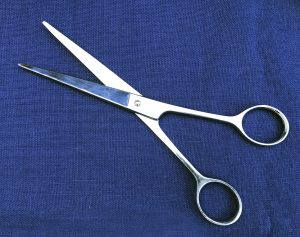
Shears are used for trimming the feet and hocks. Good places to shop for them are at dog shows or beauty supply stores.
- Thinning shears
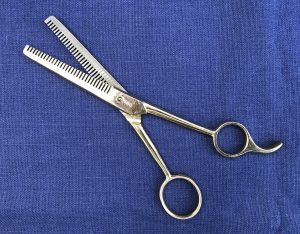
With their serrated edges, thinning shears blend the ends of the hair. They’re handy for trimming the long tufts on the tops of the feet, so the foot looks even. Some of us also like to use them on the sides of the foot, because if we make a mistake, it’s less likely to show!
- Spray bottle
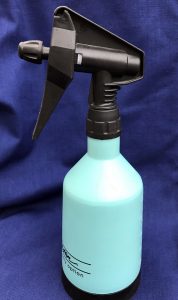
Use the spray on a fine mist to control static electricity and make the coat easier to handle. You can use plain water or add a little conditioner.
- Undercoat rake (optional)
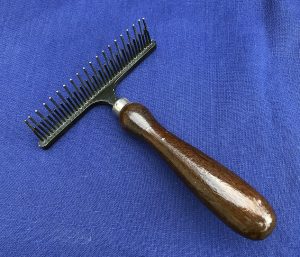
A teflon-coated undercoat rake is handy to have when the dog is blowing coat. They’re great for removing loose coat near the skin. Look for a rake with long tines. (Note: NOT a de-matting tool with sharpened blades.)
- Tack box or carry-all
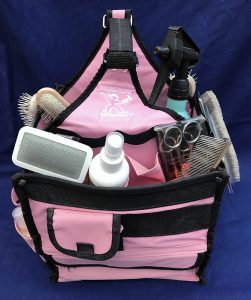
It’s a good idea to keep all of your grooming supplies together in a box or carry-all, to keep your tools organized and make it easy to find them when you need them. There are lots of choices, from nylon tool caddies to fancy aluminum cases with drawers. Get whichever you like, but make sure your brushes are stored so the pins don’t get bent or damaged!
- Grooming table
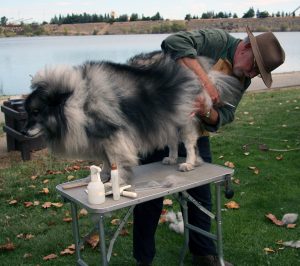
Do you have to have a grooming table? No… but grooming your dog is so much easier if you’re standing up, working at waist level. Bending over, trying to brush the dog on the floor or in your lap, is hard work! You really will groom your dog more often if you’re comfortable!
Most grooming tables have folding legs, so you can put the table away and bring it out when you need it. No one will notice if you cover it with a cloth and use it as a side table during the holidays!
If you don’t have a grooming table, you can make do with a kitchen table covered with a towel.
Nail trimming
You can have your dog’s nails trimmed by the vet, but if you do it yourself, you can do them more often, and keep them shorter. To do it yourself, you’ll need the following:
- Nail clippers
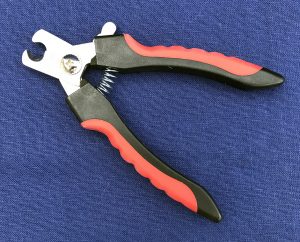
We use scissors style clippers to shave off tiny pieces of the nail. This is more comfortable for the dog than taking off big chunks, and we’re less likely to get the nail too short.
- Dremel (optional)
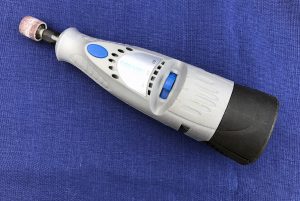
A Dremel is great for finishing the nail and smoothing the edges after clipping. Finishing with a Dremel will help you avoid getting the nail too short.
- Styptic powder

This is good to have, just in case you get the nail too short. You won’t use it very often, so a small container will last for years.